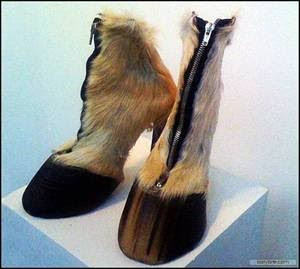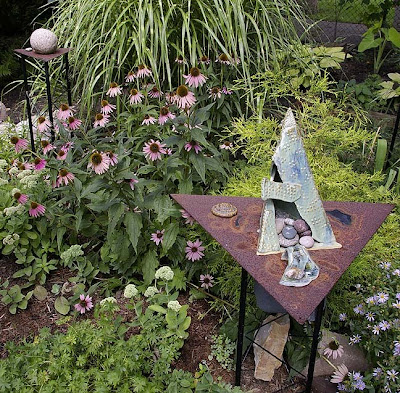It really helps to explore the boundaries of one's potential artistically when there is a patron in sight. In my case, Joyce Levy has been that benefactor. Formerly a board member of the now defunct Textile Arts Center of Chicago, Joyce's love of art and textiles has given her the pleasure of supporting an unknown like myself with fairly large projects. Projects that I would not have been able to explore without the financial backing. I started quilting in the early 90's and even with limited skills, she commissioned four quilts in memory of her brother Bruce. The quilts were made from Bruce's t-shirts and went to his wife, parents, best friend and Joyce. You can see those quilts and learn more about their story in my former post.
Joyce, a brilliant lawyer, comes from a family of talent and enthusiasm for life. Her mother, recently deceased due to a medical error, was a psychologist and an avid collector of folk art from around the world, including a large collection of Native American silver work. Bruce, a cancer victim, was a mathematician, a minimalist, but gifted with words. The patriarch of the family, Sidney Levy, is recognized around the world for his work in marketing and behavioral management. Sidney is now on my short list of patrons. He commissioned me to make something interesting out of the ties he had worn for the last 40 years. Thus, "Sidney's Ties" came into existence.


After Bobette passed away, Sidney went through a purging phase and moved to a smaller place. At 88 years of age, he no longer wears his ties. What to do with them? So many memories tied up into them... Ties worn to work, ties purchased at favorite stores, ties received as gifts, ties that went overseas... These pieces of silk represent a lifetime of woven history, thus weaving them together make an added statement of all the memories that tie us together.
I have not had the honor of meeting Sidney in person, although I have had the pleasure of speaking to him on the phone and via email. I was tickled to find a video of him on the web, an interview posted by "Life in Perpetual Beta":
Find more videos like this on Life in Perpetual Beta
The project started with a visit from Joyce to visit Sidney in Arizona. They spread the ties out on the bed, over the quilt I had made in Bruce's memory. "Surely something can be made of this!"
My initial mock-up was quite different from the final piece. Some people plan everything out before they dig in. I don't. I work from an intuitive level, changing things as I go. This can be difficult in a commission as the future owner of the piece has to be as free spirited as I am. When I asked Sidney what the budget was, he said, "Go until it is finished." A mandate like that can only come from someone who understands and has experienced the creative process.
I like texture and have been exploring how to make my textiles more dimensional. I had seen a demonstration of rushing at the quilt show and thought that would work for framing the photos. I had to gut the ties to make them pliable enough for gathering. This was also the first time I had worked with fabric transfers. I used the pre-treated fabric sheets that Caryl Bryer Fallert sells at her shop. I stuffed each photo and quilted around the body outlines. These ties were the special ones. Joyce had written little notes attached to them and I wanted to incorporate her words, but ended up not figuring out how to do that in a way that worked for me.
I used buttons, glass Czech beads and fresh water pearls to lighten and highlight the central figures. They glow when they are under a spotlight. You will notice that the piece is not straight. I don't like straight lines. Maybe I can't even do them, but I know that the ethnic textiles that I so love are often uneven, crooked, worn and all of that tells me a story. So, "Sidney's Ties" is also crooked. Life is beautiful, full of wonderful memories, but Sidney and his family have also had their share of grief, of the pain that can make any straight back crooked. So, this tribute to a life well-lived hopefully captures some of the dualism that propels each of us from youth into maturity, from life to death, and from need to abundance. I thank you, Sidney and Joyce, for the great pleasure this project has given me!
See Sidney's bios at the University of Arizona and at NorthWestern University's Kellogg School of Management.
*



























































